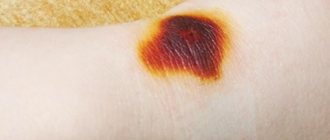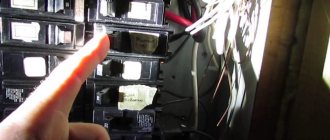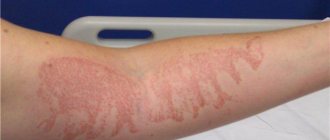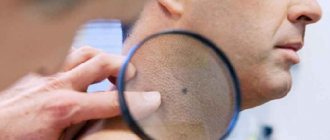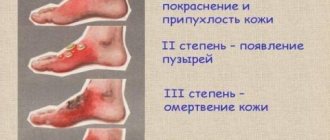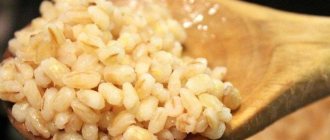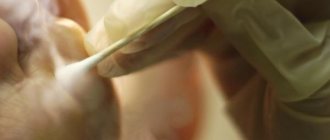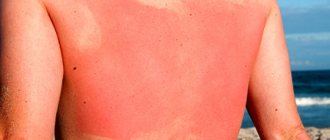Classification of burns
Based on the depth of tissue damage, doctors distinguish four degrees of burns.
The first one is easy. The top layer of skin is damaged. The epithelium turns red and swells. The wound is accompanied by a strong burning sensation. Heals in 3-4 days even without treatment.
The second is of medium severity. The epithelium and dermis suffer. At the same time, blood vessels and nerve fibers remain in order. The person experiences acute pain and burning. Small blisters appear at the site of damage. They are filled with clear liquid. Heals within 2 weeks.
The third one is hard. The skin is damaged to its full depth. Blood vessels. Partially subcutaneous tissue. Large blisters form. Some of them burst. Pain sensitivity in the injured area decreases.
The fourth is extremely difficult. Skin, muscles, tendons, and bones are severely damaged. Necrosis of the injured area occurs.
The first two degrees cause burning and pain. The third and fourth are accompanied by pain only at the time of injury. Then pain sensitivity decreases. The reason is the destruction of nerve fibers.
Traditional treatment methods
Folk remedies help cure finger burns.
Herbal extracts are not effective if blisters form on the burned area. The blister will not allow them to penetrate deep into the tissue.
To relieve signs of a burn and prevent wound infection, use:
- Woodlice juice. The juice is squeezed out of the grass and applied to the affected skin. Home remedy relieves pain and speeds up healing.
- Boiled onions alleviate the condition and speed up recovery. The onion along with the husk is placed in a saucepan, filled with water, and cooked until tender. Remove the head from the broth, cool, and peel. The pulp is turned into pulp. Tied to the sore spot.
- Calendula oil helps treat burned skin . It has bactericidal and anti-inflammatory effects. The wound heals quickly, the product prevents the formation of scars. A napkin soaked in oil is wrapped around the finger and secured with a bandage. Do two dressings a day. The product should not be used for first aid for burns. It is used when the skin is cool.
- At home, burnt fingers are treated with veronica decoction. Place 20 g of herb in 250 ml of boiling water and filter after cooling. You can use it to make lotions and wash wounds.
- Compresses made from raw potatoes or pumpkin. To make the applique, vegetables are crushed into a paste. Place the product on a napkin and tie it to your finger. The dressing is changed as soon as the paste warms up.
- Burns are successfully treated with cabbage leaves. Take the white of a fresh chicken egg and add to it an equal amount of pulp obtained from a cabbage leaf. Apply to the burn.
- Cabbage leaves are boiled in milk and pureed. Mix with rye flour to form a flatbread. Fixed on the affected area.
- If your hand and fingers are burned, apply lotions with eucalyptus extract. Place 10 g of herb in 250 ml of water, bring to a boil, and simmer for 30 minutes. Filter, moisten a napkin, apply to the lesion. Change as it warms up (every 5-10 minutes) for an hour. Lotions cool burned skin and relieve discomfort. Do two procedures a day.
- Roses are used to treat 1st and 2nd degree burns. Freshly picked petals are applied to the wound and secured with a bandage. The application is removed when the petals are completely dry.
- Lotions with herbal extracts. A decoction is prepared from clover inflorescences, rose hips, and coltsfoot leaves. Brew a teaspoon of herbs in 200 ml of hot water. After 30 minutes, filter, soak a cloth with the product, and apply to the damaged skin. The application is changed as soon as the napkin warms up. The duration of the procedure is 1 hour. Lotions are made twice a day. Herbal extracts quickly heal burns, relieve pain, and prevent scars from forming.
- Sea buckthorn oil can even treat severe burns when tissue necrosis occurs. Apply the product to damaged skin and apply a bandage. The procedure is done twice a day.
- Light burns are treated with St. John's wort oil. Add a tablespoon of St. John's wort inflorescences to 250 ml of vegetable oil. Leave for 14 days to infuse. The bottle of medicine is shaken periodically. The oil is applied to the affected skin and a sterile bandage is applied. Bandages are changed twice a day.
- Calendula ointment helps combat finger burns. It is prepared like this: mix pharmacy tincture of calendula with petroleum jelly in a 2:1 ratio. The ointment is applied to damaged skin and bandaged. The dressing is changed twice a day.
Burns on the fingers should be treated after consultation with a doctor. Wounds need to be treated properly. With adequate treatment, damaged skin quickly recovers and there are no scars left on it.
I burned my finger - how to relieve the pain?
- The first thing is to eliminate the source of injury. Move the pan or hot item away. Turn off the electrical appliance.
- Then cool the affected area of skin. For some time it itself remains a source of heat. As a result, it damages healthy tissue. Don't skip this point! Otherwise, in an hour the burn will expand its borders.
- If you have anti-burn gel in your first aid kit, apply it to the affected finger. It will not only cool. Pain relief. Neutralizes the wound.
- When there are no special preparations, ordinary water can be used for cooling. She should have a temperature of 15-20 degrees.
- Remove the rings. Later, due to swelling, this will be difficult to do.
- After cooling, apply a sterile bandage to the burn site. In places where the blisters have burst, you can place pieces of clean cling film. It will not stick to the wound. This will make it easier for you to remove the bandage later. You don't have to tear it off with the meat.
- Need to numb the pain and burning sensation? Take any analgesic. Apply a pain-relieving compress. It's easy to prepare. Soak the bandage in the novocaine solution. Apply to the sore spot.
First aid for a finger burn
After receiving an injury, you need to immediately help the victim. Such skin lesions are dangerous and can affect the functionality of the limb.
Thermal
Such a defect can be obtained on a finger during daily housework. It is caused by contact of the dermis with hot objects:
- teapot;
- soldering iron;
- stove;
- ferry;
- iron;
- light bulb;
- curling iron
When preparing food, it is easy to get injured by exposing an area of skin to hot soup or tea; If you accidentally touch a hot pot, frying pan or boiling oil, you can get seriously burned. Fire and boiling water, getting on the delicate skin film, provoke injury to the upper layers.
The extent of damage will depend on the following factors:
- Time of contact with skin.
- Temperatures.
- Type of object or liquid.
- Area of damaged surface.
The depth of the finger injury is determined during the examination.
If the injury occurred in the interdigital space, the degree is more severe. The skin in these areas is thinner than on the pads and phalanges.
In the first degree of injury, healing occurs after five days without the use of medications.
If the area of the damaged area exceeds 3 square centimeters, treatment at home is prohibited.
Do not use badger fat, butter or sunflower oil for lotions.
For small lesions of the skin, cooling will help, for large lesions, painkillers will be required:
- eliminate the source of exposure to the skin;
- cool the damaged area under running water for 12-17 minutes;
- To dry, gently blot with a napkin;
- Use a weak solution of manganese or medical alcohol as disinfection.
Until the pain subsides and the wound heals, do not get your finger wet and avoid contact with hot objects.
What to do if a burn blister appears on your finger:
- cool with water;
- apply a bandage;
- Do not open the bubble.
The resulting liquid inside the blister will resolve within 3-5 days, and the skin will dry out.
If a large area of skin is damaged in grades 3 and 4, you need to cover it with gauze and consult a doctor.
| Degree | Symptoms |
| 1 | Pain, redness of the dermis. |
| 2 | The appearance of vesicles. |
| 3 | Formation of an open lesion. |
| 4 | Carbonization of tissues, the occurrence of dry necrosis, loss of sensitivity. |
Electric
Such injuries require hospitalization. Electrical injuries are not common, but they are more dangerous.
Injury occurs in the hands and heels, which form an electric arc. Tissue and tendon rupture occurs (even fractures).
When providing first aid, the patient goes through a number of stages:
- Eliminate contact of the victim with an electrical source, use products that are not electrically conductive.
- Cover the burn surface with a sterile bandage.
- Call an ambulance.
- Arrange for hospitalization.
It is forbidden to eliminate the impact of an electrical source on a person with unprotected hands.
Chemical
This type of injury is represented by defects in the dermis due to exposure to aggressive acids and alkalis. If handled carelessly, the glue can cause damage to the skin film. This may include chemicals, sink, toilet, bathtub cleaners, or vinegar.
When exposed to chemicals, tissue necrosis of coagulation or colliquation types occurs.
A symptom of exposure to acids is a dense scab, and a symptom of alkali is non-healing wet areas.
First aid for a chemical burn consists of the following steps:
- remove the product from the dermis;
- carefully remove clothing from the area;
- rinse the wound thoroughly under the tap;
- provide adequate pain relief with medications;
- cover the affected surface with a sterile bandage;
- arrange hospitalization.
Ointments and Panthenol should not be used to neutralize chemicals. This leads to a negative reaction in combination with product residues.
In this case, water will be enough, which will help wash away the remaining chemicals from the thin layers of the epidermis.
In cases of contact with chemicals on the skin, immediately seek help from specialists to avoid ulcerative formations on the dermis, which may swell.
Effective folk remedies
Among folk recipes, raw potatoes have proven to work well. Wash the vegetable, peel and finely grate. The resulting mass is applied to the wound and changes as it dries and heats up. Used for 1st degree.
You can also use cabbage leaves as a compress. Aloe leaves are no less useful. You can soak a gauze bandage in their juice and apply it to the wound.
The products are used only for stage 1 damage.
What you should not do at home if you have a finger burn :
- use oil solutions to treat the wound on the first day;
- apply ice.
- carry out treatment with iodine, brilliant green and other alcohol-containing products;
- pop bubbles;
- cover the burn wound with a plaster.
Severity
The severity of symptoms and first aid measures depend on the severity and area of the burn. This can be assessed by the appearance of the affected skin. In any case, you need to be able to react quickly to reduce the likelihood of consequences.
Degrees and their features:
- The first is that only the superficial layer is affected. Pain, redness, and tissue swelling appear. In most cases, complete recovery occurs within 7 days without any traces.
- The second is with the formation of blisters. With the right treatment tactics, recovery occurs in up to 2 weeks without consequences.
- The third is with necrosis, that is, tissue death. The formation of a crust or scab can be observed over the wound. Healing is very slow and marks remain.
- The fourth - with charring of the skin. The most severe degree of burn with damage to the muscle layer and bones. The condition requires urgent hospitalization.
Thermal burns in the hand area are quite common. This is due to ignorance or ignorance of safety precautions and carelessness. Everyone should know what to do if a finger is burned at home so that healing occurs quickly and without complications.
Prevention measures
To prevent burns, it is necessary to observe safety measures when solving all everyday issues:
- Remove hot food from the heat only with an oven mitt.
- You should not check whether the kettle is switched on by touching it.
- Before turning on the water in the sink, you need to make sure that the faucet levers are in the right position.
- When working with household chemicals, be sure to use gloves.
- Store household chemicals out of the reach of children.
- Small children should not be left unattended in the kitchen or bathroom.
Following these rules will reduce the likelihood of getting a finger burn.
Why are finger burns dangerous?
Any trauma to the skin can lead to the development of a secondary bacterial infection. A 1st or 2nd degree burn to your fingers can be harmless if you follow wound care rules. If you puncture a burn blister or neglect antiseptic treatment, there is a risk of the situation leading to infection and subsequent amputation. Burns of 3-4 degrees lead to the same situation if not treated correctly.
Possible complications include nail splitting, partial removal, or a broken plate. These injuries are painful and may also require removal of the nail, which will affect the aesthetics of the appearance.
A seemingly harmless injury can lead to serious complications. Compliance with basic safety measures and rules for caring for burns will reduce the risk of complications to a minimum.
Treatment with pharmaceuticals
For minor burns, you can use special products from the pharmacy that help restore the skin faster and prevent secondary infection of the wound. The most popular of them include:
- Anti-burn wipes. They are impregnated with a special gel that produces an analgesic, anti-inflammatory and cooling effect. Such products are often treated with Lidocaine. The napkin is applied to the problem area several times a day as needed.
- Panthenol. Accelerates tissue regeneration and prevents bacterial infection. If burn blisters on the skin burst and wounds form, after each treatment with Panthenol it is recommended to additionally protect the surface with sterile bandages .
- Anikol. The drug accelerates the healing of damaged epidermis and prevents the development of necrosis. The product effectively fights the inflammatory process, relieves pain, eliminates swelling and prevents bacterial infection of the epidermis.

